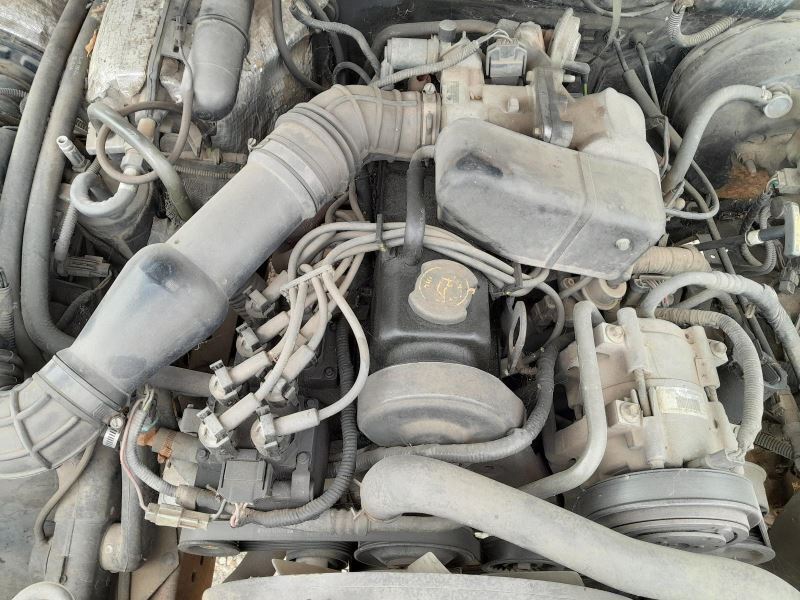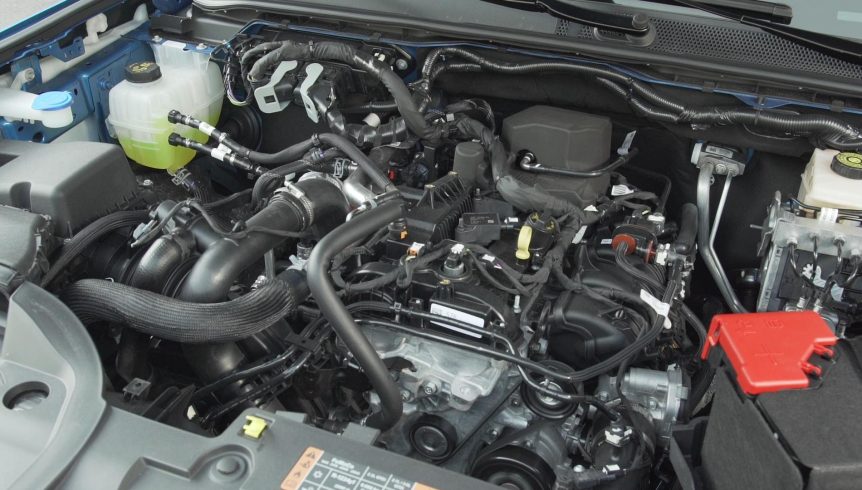Understanding the Fundamentals of Automobile Engines: Functions, types, and features

Introduction of Auto Engines
A cars and truck engine functions as the heart of an automobile, converting gas right into mechanical power to push it ahead. This elaborate system comprises numerous elements that work in unison to make sure optimal efficiency and effectiveness. The fundamental procedure of a vehicle engine involves the internal burning procedure, in which fuel and air are blended, ignited, and removed to produce power.
The engine's design can considerably influence its performance, gas performance, and exhausts. Secret elements include the cylinder block, pistons, crankshaft, and camshaft, each playing an important function in the engine's overall feature. The cyndrical tube block houses the cyndrical tubes where burning occurs, while the pistons convert the eruptive power from combustion right into straight movement. This motion is then changed into rotational power by the crankshaft, allowing the lorry's wheels to transform.
In enhancement to these components, engines typically use various systems such as gas injection, ignition, and cooling down systems to improve performance and long life. Comprehending the standard mechanics of cars and truck engines is vital for diagnosing issues and carrying out maintenance, ultimately adding to the automobile's reliability and effectiveness gradually.
Sorts Of Vehicle Engines
Vehicle engines can be classified right into numerous types based on their style, fuel kind, and operational concepts. 2.2 ford ranger engine. One of the most usual categories include internal burning engines (ICE), electrical engines, and crossbreed engines
Interior combustion engines, which can be additional separated right into fuel and diesel motor, run by sparking a fuel-air blend to create power. Gasoline engines are generally lighter and smoother, while diesel motor are much more fuel-efficient and deal better torque.
Electric engines use electrical power saved in batteries to power an electric motor, providing instant torque and no emissions during operation. As modern technology breakthroughs, electric lorries (EVs) are progressively coming to be popular for their ecological benefits and reduced running expenses.
Hybrid engines incorporate components of both internal combustion and electrical engines, permitting flexible power resources and boosted gas effectiveness. They can operate in different settings, making use of either the fuel engine, the electric motor, or both at the same time.
Each kind of engine has distinctive benefits and drawbacks, influencing their application in different car kinds and market sections, from portable cars to durable vehicles. Recognizing these kinds is vital for making notified decisions pertaining to automobile option and efficiency assumptions.
Engine Functions Clarified
Understanding engine functions is crucial for understanding just how vehicles operate efficiently. At the core of any type of interior combustion engine exists the basic process of transforming fuel into mechanical energy.
The ignition takes place following, stiring up the blend and producing a quick growth of gases. This force drives the piston down throughout the power stroke, which ultimately translates into the rotational activity of the crankshaft. The exhaust stroke after that gets rid of the invested gases from the chamber, giving way for a new cycle to commence.
In enhancement to these primary functions, engines likewise include systems that manage air conditioning and lubrication, making certain optimal operational temperatures and lowering friction in between moving components. This elaborate interaction of functions makes it possible for the engine to produce the power essential for lorry propulsion while preserving performance and integrity. Comprehending these features gives useful insight into the complexities of automobile engineering and boosts the ability to identify and address engine-related issues successfully.
Trick Engine Attributes
Engine layout incorporates several crucial functions that considerably affect efficiency, effectiveness, and resilience. Among the most crucial elements is the engine setup, that includes inline, V-type, and level styles. Each arrangement affects the engine's size, power, and balance output, thus affecting general automobile characteristics.
One more essential function is the engine displacement, describing the total quantity of all cylinders. Bigger variations commonly produce even more power yet may jeopardize gas efficiency. Engine materials additionally play a critical role; light-weight and high-strength materials, such as aluminum and magnesium alloys, improve efficiency without including extreme weight.
The sort of gas shot system used-- such as multi-port or straight shot-- influences burning performance and exhausts. Supercharging and turbocharging are features that boost engine performance forcibly additional air into the burning chamber, increasing power result without considerably enhancing engine size.
Lastly, the presence of advanced engine management systems optimizes fuel-air mixture and ignition timing, adding to smoother operation navigate to these guys and better fuel economy. Collectively, these features specify an engine's abilities, setting the foundation for its performance and long life in an affordable vehicle landscape.
Maintenance Tips for Engines
Proper engine upkeep is critical for making certain optimum efficiency and durability, as overlooking routine care can bring about considerable problems down the line. To discover this maintain your engine effectively, begin with normal oil modifications, usually every 3,000 to 7,500 miles, depending upon the sort of oil made use of. Fresh oil lubricates engine components, minimizing friction and wear.
Additionally, checking coolant degrees is important to prevent getting too hot. Guarantee that the coolant is topped up and remains in great problem to preserve effective temperature level policy. Routinely inspect and change air and fuel filters, as clogged filters can prevent airflow and fuel distribution, compromising engine performance.
Furthermore, focus on stimulate plugs and ignition systems. Used or defective ignition system can result in misfiring and lowered performance. Inspecting the battery terminals and links for rust is additionally vital, as a weak battery can influence engine starting.

Verdict
In summary, a comprehensive understanding of automobile engines includes different kinds, features, and vital attributes that significantly influence vehicle performance. Internal burning engines, in addition to electrical and hybrid choices, show varied systems for power conversion. 2.2 ford ranger engine. Acknowledging the necessary features, such as consumption and exhaust cycles, alongside crucial engine features like configuration and fuel injection systems, equips vehicle owners with the knowledge necessary for effective maintenance and procedure, inevitably boosting automobile durability and efficiency
A cars and truck engine her explanation serves as the heart of a car, converting gas right into mechanical power to push it ahead. The fundamental operation of a vehicle engine involves the inner burning process, wherein gas and air are combined, stired up, and eliminated to produce power.
Frequently examine and replace air and fuel filters, as clogged filters can prevent air flow and gas distribution, endangering engine effectiveness. - 2.2 ford ranger engine
In recap, a comprehensive understanding of vehicle engines encompasses various kinds, functions, and key functions that considerably affect car efficiency. Recognizing the crucial functions, such as intake and exhaust cycles, alongside important engine features like setup and gas injection systems, furnishes vehicle proprietors with the expertise required for reliable maintenance and procedure, inevitably enhancing automobile long life and effectiveness.